Opinion & Analysis
Hunt: Advanced break down of Tiger’s stats under Harmon, Haney and Foley
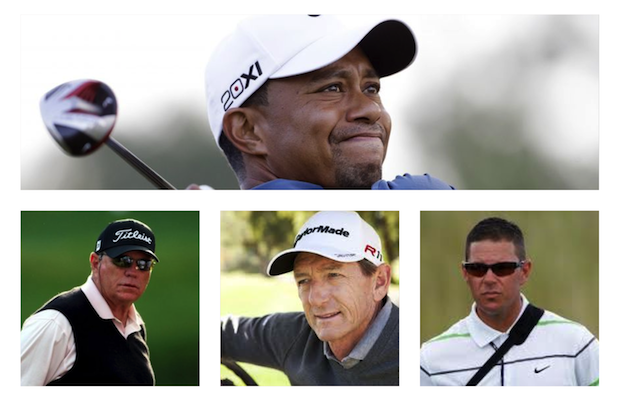
Last week Tiger Woods announced that he was parting ways with instructor Sean Foley. I wanted to examine Tiger’s game over the course of his professional career to get a better understanding of what was going on and what may have caused him to change swing coaches over the years.
Please bear with me as many of the key metrics listed below were not available during these years. Nonetheless, we can still get a pretty good idea of Tiger’s game during the Butch Harmon years.
For starters, he was one of the longest golfers on Tour. This was despite using a steel-shafted driver when most of the Tour had switched to drivers with lighter graphite shafts. The pinnacle of Woods’ success was in 2000; he won nine times including the U.S. Open, The Open Championship and PGA Championship. He ranked second in Driving Distance that season and 54th in Driving Accuracy, which is flat-out incredible.
We also see with his driving that his misses were fairly even. As I researched in a previous column I wrote (http://www.golfwrx.com/115076/the-myth-behind-the-one-way-miss/), there is a large myth about a one-way miss being preferable. Instead, the best drivers on Tour typically do not miss their tee shots in one direction. And the golfers on Tour who do miss heavily to one side are usually struggling with a problem shot they have yet to resolve. For Tiger, there is no imbalance of his missed tee shots.
For the years we have the data, Tiger was a very good iron player. The “Zone play” data is only on shots from the fairway because that is where we had the most complete information for Tiger over the years. This is fine because from a statistical standpoint, shots from the fairway give us the best indicator of a golfer’s iron play. But, we do see that hitting shots from the rough was a large issue for Tiger as he ranked near the bottom on Tour.
The putting data is scarce during this timeframe, but he appeared to putt fairly well in 2003. While ballstriking has a larger influence to success on Tour than putting, every piece of data I’ve researched about the game points to Tiger putting extremely well in 2000.
The Haney years are best depicted as a large regression in Tiger’s driving mixed with a tremendous progression with his iron play. There also seemed to be an improvement with his putting.
Tiger was still fairly long off the tee and was generating as much as 124.6 mph of club head speed. While we do not have any hard data on his club head speed under Butch Harmon, it was reported to be around 125 mph during that timeframe. In the Haney years, however, we start to see major issues with Tiger’s accuracy off the tee.
In 2000, Tiger was 54th in fairway percentage and in 2004 he fell to 177th and then 193rd in 2005. He also started to develop a very pronounced right miss bias, which at its worst was at 24 percent of misses to the right rough versus 10 percent to the left rough in 2008.
Furthermore, we start to see not only a dip in Tiger’s club head speed in 2009 and 2010, but we start to see Tiger become more conservative off the tee. The biggest indication is the difference in Tiger’s Driving Distance (measured drives) ranking versus his Driving Distance in all drives measured by a laser. When the “all drives” ranking is noticeably lower than the “measured drives” ranking, it is an indication that the golfer is laying up off the tee more often.
I don’t think any of this is revelatory, as those who watched Tiger during the Haney years saw the issues he had with hitting blocked shots off the tee. And then he played very conservatively off the tee by hitting a lot of 3 woods and 2 irons in order to keep the ball in play. Remember the 2009 PGA Championship, where Tiger lost to Y.E. Yang? Tiger almost never hit driver off the tee in the final round.
Tiger’s iron play during the Haney era is a different story. We can see by his rankings how incredible Tiger was, however, that doesn’t quite give the entire picture. The key area for iron play on Tour are shots from the “Red Zone,” which is 175-to-225 away from the hole. Not only did Tiger rank 1st in 5 out of his 7 years in the Red Zone under Haney, but he often ranked well ahead of the 2nd ranked player.
In 2006, the 2nd-ranked player from the Red Zone was Kenny Perry. Tiger was hitting it 9 percent closer to the hole from the Red Zone than Kenny Perry did that season. In 2007, Ernie Els was the 2nd-ranked player from the Red Zone. Tiger was hitting it 5 percent closer to the cup on average than Els from the Red Zone.
And not only was Tiger becoming an incredible iron player from the fairway, but his play from the rough greatly improved. The numbers and the victories dictate that had to happen because he was finding the rough much more often. Therefore, he had to improve his shots from the rough in order keep winning.
Lastly, we see a very telling and interesting trait of Tiger’s game in his putting metrics. He was generally a good to spectacular putter from 3-to-5 feet, however, he was incredible at making putts from 15-to-25 feet. Typically, Tour players do not rank high or low with any consistency on putts more than 15 feet long. A Tour player who putts poorly from longer than 15 feet one season is likely to progress towards the mean the next season. Conversely, a Tour player who putts well from longer than 15 feet one season is more likely to regress towards the mean the next season.
Tiger, on the other hand, putted fantastic from 15-to-25 feet five seasons in a row: from 2004 to 2008. He slipped in 2009, but countered that by putting superbly on putts longer than 25 feet. This shows that Tiger is at the top of his game when he is making putts from 3-to-5 feet and from 15-to-25 feet. He was very wild off the tee and then became conservative off the tee in the Haney era. So, that will mean more birdie putts from 15-to-25 feet and more par saves from 3-to-5 feet. So when Tiger had his putter working from those distances, he was very difficult to beat.
In the Foley years, we see that Tiger’s club head speed decreased, however, we also saw that decrease in club head speed in the 2009 and 2010 seasons when Tiger was still working with Haney. I think it is safe to say that the knee injury certainly took a toll on his club head speed. After the 2011 season, we see that Tiger started to not miss the right all of the time. And his fairway percentage improved nicely to 66th in 2012.
What I find interesting is that Tiger had a very nice season driving the ball in 2012. He was not laying up much off the tee, as his Driving Distance rank on measured drives versus all drives was virtually the same. But, after that successful 2012 season, Tiger started to become incredibly conservative off the tee and was laying up off the tee quite often. His iron play regressed, but it essentially became more human from the incredible iron play during the Haney years. His troubles from the rough also started to come back.
Lastly, Tiger’s putting was good but not elite like it was in many of the seasons under Haney. He still made a lot of 15-to-25 foot putts. In fact, after he won his 4th event of 2013 (The Players Championship at TPC Sawgrass), he was ranked No. 1 on putts from 15-to-25 feet, well ahead everybody else. He needed to putt that well from 15-to-25 feet, however, because he was becoming so conservative off the tee that he would leave himself with longer birdie putts than Tour players who were hitting driver off the tee and thus and hitting their approach shots closer to the hole. And since his play from the rough regressed, that required him to make more putts from 3-to-5 feet to save par and he simply could not get that done under Foley.
In summation, Tiger had some incredible parts to his game under Harmon and Haney. His driving under Harmon was at times incredible. His iron play and putting from 15-to-25 feet under Haney was off the charts. The injuries have taken their toll and it has greatly hurt his club head speed. He has further exasperated the matter by becoming extremely conservative off the tee, even when his accuracy greatly improved under Foley.
At this point, Tiger will either need to find a way to rejuvenate himself and regain his club head speed or he will have to change the way he plays the game at 115-to-116 mph club head speed. The numbers already show the effect that his injuries have had on his game. So, any further injuries will just amplify the issues.
- LIKE10
- LEGIT0
- WOW3
- LOL0
- IDHT0
- FLOP0
- OB0
- SHANK0
Opinion & Analysis
The Wedge Guy: What really makes a wedge work? Part 1

Of all the clubs in our bags, wedges are almost always the simplest in construction and, therefore, the easiest to analyze what might make one work differently from another if you know what to look for.
Wedges are a lot less mysterious than drivers, of course, as the major brands are working with a lot of “pixie dust” inside these modern marvels. That’s carrying over more to irons now, with so many new models featuring internal multi-material technologies, and almost all of them having a “badge” or insert in the back to allow more complex graphics while hiding the actual distribution of mass.
But when it comes to wedges, most on the market today are still single pieces of molded steel, either cast or forged into that shape. So, if you look closely at where the mass is distributed, it’s pretty clear how that wedge is going to perform.
To start, because of their wider soles, the majority of the mass of almost any wedge is along the bottom third of the clubhead. So, the best wedge shots are always those hit between the 2nd and 5th grooves so that more mass is directly behind that impact. Elite tour professionals practice incessantly to learn to do that consistently, wearing out a spot about the size of a penny right there. If impact moves higher than that, the face is dramatically thinner, so smash factor is compromised significantly, which reduces the overall distance the ball will fly.
Every one of us, tour players included, knows that maddening shot that we feel a bit high on the face and it doesn’t go anywhere, it’s not your fault.
If your wedges show a wear pattern the size of a silver dollar, and centered above the 3rd or 4th groove, you are not getting anywhere near the same performance from shot to shot. Robot testing proves impact even two to three grooves higher in the face can cause distance loss of up to 35 to 55 feet with modern ‘tour design’ wedges.
In addition, as impact moves above the center of mass, the golf club principle of gear effect causes the ball to fly higher with less spin. Think of modern drivers for a minute. The “holy grail” of driving is high launch and low spin, and the driver engineers are pulling out all stops to get the mass as low in the clubhead as possible to optimize this combination.
Where is all the mass in your wedges? Low. So, disregarding the higher lofts, wedges “want” to launch the ball high with low spin – exactly the opposite of what good wedge play requires penetrating ball flight with high spin.
While almost all major brand wedges have begun putting a tiny bit more thickness in the top portion of the clubhead, conventional and modern ‘tour design’ wedges perform pretty much like they always have. Elite players learn to hit those crisp, spinny penetrating wedge shots by spending lots of practice time learning to consistently make contact low in the face.
So, what about grooves and face texture?
Grooves on any club can only do so much, and no one has any material advantage here. The USGA tightly defines what we manufacturers can do with grooves and face texture, and modern manufacturing techniques allow all of us to push those limits ever closer. And we all do. End of story.
Then there’s the topic of bounce and grinds, the most complex and confusing part of the wedge formula. Many top brands offer a complex array of sole configurations, all of them admittedly specialized to a particular kind of lie or turf conditions, and/or a particular divot pattern.
But if you don’t play the same turf all the time, and make the same size divot on every swing, how would you ever figure this out?
The only way is to take any wedge you are considering and play it a few rounds, hitting all the shots you face and observing the results. There’s simply no other way.
So, hopefully this will inspire a lively conversation in our comments section, and I’ll chime in to answer any questions you might have.
And next week, I’ll dive into the rest of the wedge formula. Yes, shafts, grips and specifications are essential, too.
- LIKE27
- LEGIT7
- WOW1
- LOL1
- IDHT2
- FLOP3
- OB1
- SHANK2
Golf's Perfect Imperfections
Golf’s Perfect Imperfections: Amazing Session with Performance Coach Savannah Meyer-Clement

In this week’s episode, we spent some time with performance coach Savannah Meyer-Clement who provides many useful insights that you’ll be able to implement on the golf course.
- LIKE0
- LEGIT0
- WOW0
- LOL0
- IDHT0
- FLOP0
- OB0
- SHANK0
19th Hole
Vincenzi’s 2024 RBC Heritage betting preview: Patrick Cantlay ready to get back inside winner’s circle

Just a two-hour drive from Augusta National, the PGA TOUR heads to Harbour Town Golf Links in Hilton Head Island, S.C. Hilton Head Island is a golfer’s paradise and Harbour Town is one of the most beautiful and scenic courses on the PGA TOUR.
Harbour Town Golf Links is a par-71 that measures 7,121 yards and features Bermuda grass greens. A Pete Dye design, the course is heavily tree lined and features small greens and many dog legs, protecting it from “bomb-and-gauge” type golfers.
The field is loaded this week with 69 golfers with no cut. Last year was quite possibly the best field in RBC Heritage history and the event this week is yet another designated event, meaning there is a $20 million prize pool.
Most of the big names on the PGA Tour will be in attendance this week with the exceptions of Hideki Matsuyama and Viktor Hovland. Additionally, Webb Simpson, Shane Lowry, Gary Woodland and Kevin Kisner have been granted sponsors exemptions.
Past Winners at Harbour Town
- 2023: Matt Fitzpatrick (-17)
- 2022: Jordan Spieth (-13)
- 2021: Stewart Cink (-19)
- 2020: Webb Simpson (-22)
- 2019: CT Pan (-12)
- 2018: Sotoshi Kodaira (-12)
- 2017: Wesley Bryan (-13)
- 2016: Branden Grace (-9)
- 2015: Jim Furyk (-18)
In this article and going forward, I’ll be using the Rabbit Hole by Betsperts Golf data engine to develop my custom model. If you want to build your own model or check out all of the detailed stats, you can sign up using promo code: MATTVIN for 25% off any subscription package (yearly is best value).
Key Stats For Harbour Town
Let’s take a look at key metrics for Harbour Town Golf Links to determine which golfers boast top marks in each category over their past 24 rounds.
Strokes Gained: Approach
Strokes Gained: Approach is exceedingly important this week. The greens at Harbour Town are about half the size of PGA TOUR average and feature the second-smallest greens on the tour. Typical of a Pete Dye design, golfers will pay the price for missed greens.
Total SG: Approach Over Past 24 Rounds
- Scottie Scheffler (+1.27)
- Tom Hoge (+1.27)
- Corey Conners (+1.16)
- Austin Eckroat (+0.95)
- Cameron Young (+0.93)
Good Drive %
The fairways at Harbour Town are tree lined and feature many dog legs. Bombers tend to struggle at the course because it forces layups and doesn’t allow long drivers to overpower it. Accuracy is far more important than power.
Good Drive % Over Past 24 Rounds
- Brice Garnett (88.8%)
- Shane Lowry (+87.2%)
- Akshay Bhatia (+86.0%)
- Si Woo Kim (+85.8%)
- Sepp Straka (+85.1%)
Strokes Gained: Total at Pete Dye Designs
Pete Dye specialists tend to play very well at Harbour Town. Si Woo Kim, Matt Kuchar, Jim Furyk and Webb Simpson are all Pete Dye specialists who have had great success here. It is likely we see some more specialists near the top of the leaderboard this week.
SG: TOT Pete Dye per round over past 36 rounds:
- Xander Schauffele (+2.27)
- Scottie Scheffler (+2.24)
- Ludvig Aberg (+2.11)
- Brian Harman (+1.89)
- Sungjae Im (+1.58)
4. Strokes Gained: Short Game (Bermuda)
Strokes Gained: Short Game factors in both around the green and putting. With many green-side bunkers and tricky green complexes, both statistics will be important. Past winners — such as Jim Furyk, Wes Bryan and Webb Simpson — highlight how crucial the short game skill set is around Harbour Town.
SG: SG Over Past 24 Rounds
- Jordan Spieth (+1.11)
- Taylor Moore (+1.02)
- Wyndham Clark (+0.98)
- Mackenzie Hughes (+0.86)
- Andrew Putnam (+0.83)
5. Greens in Regulation %
The recipe for success at Harbour Town Golf Links is hitting fairways and greens. Missing either will prove to be consequential — golfers must be in total control of the ball to win.
Greens in Regulation % over past 24 rounds:
- Brice Garnett (+75.0%)
- Scottie Scheffler (+69.9%)
- Corey Conners (+69.0%)
- Shane Lowry (+68.3%)
- Patrick Rodgers (+67.6%)
6. Course History
Harbour Town is a course where players who have strong past results at the course always tend to pop up.
Course History over past 24 rounds:
- Patrick Cantlay (+2.34)
- Cam Davis (+2.05)
- J.T. Poston (+1.69)
- Justin Rose (+1.68)
- Tommy Fleetwood (+1.59)
The RBC Heritage Model Rankings
Below, I’ve compiled overall model rankings using a combination of the five key statistical categories previously discussed — SG: Approach (24%), Good Drives (20%), SG: SG (14%), SG: Pete Dye (14%), GIR (14%), and Course History (14%)
- Shane Lowry
- Russell Henley
- Scottie Scheffler
- Xander Schauffele
- Corey Conners
- Wyndham Clark
- Christiaan Bezuidenhout
- Matt Fitzpatrick
- Cameron Young
- Ludvig Aberg
2024 RBC Heritage Picks
Patrick Cantlay +2000 (FanDuel)
With the exception of Scottie Scheffler, the PGA Tour has yet to have any of their star players show peak form during the 2024 season. Last week, Patrick Cantlay, who I believe is a top-5 players on the PGA Tour, took one step closer to regaining the form that’s helped him win eight events on Tour since 2017.
Cantlay limped into the Masters in poor form, but figured it out at Augusta National, finishing in a tie for 20th and ranking 17th for the week in Strokes Gained: Ball Striking. The former FedEx Cup champion will now head to one of his favorite golf courses in Harbour Town, where he’s had immaculate results over the years. In his six trips to the course, he’s only finished worse than 7th one time. The other finishes include three third places (2017, 2019, 2023) and one runner-up finish (2022). In his past 36 rounds at Harbour Town, Cantlay ranks 1st in Strokes Gained: Total per round at the course by a wide margin (+2.36).
Cantlay is winless since the 2022 BMW Championship, which is far too long for a player of his caliber. With signs pointing to the 32-year-old returning to form, a “signature event” at Harbour Town is just what he needs to get back on the winning track.
Tommy Fleetwood +3000 (FanDuel)
I truly believe Tommy Fleetwood will figure out a way to win on American soil in 2024. It’s certainly been a bugaboo for him throughout his career, but he is simply too talented to go another season without winning a PGA Tour event.
At last week’s Masters Tournament, Fleetwood made a Sunday charge and ended up finishing T3 in the event, which was his best ever finish at The Masters. For the week, the Englishman ranked 8th in the field in Strokes Gained: Approach, 10th in Strokes Gained: Ball Striking and 16th in Strokes Gained: Putting.
Harbour Town is a perfect layout for Fleetwood, and he’s had relative success at this Pete Dye design in the past. In his four trips to the course, he’s finished inside of the top 25 three times, with his best finish, T10, coming in 2022. The course is pretty short and can’t be overpowered, which gives an advantage to more accurate players such as Fleetwood. Tommy ranks 8th in the field in Good Drive % and should be able to plot his way along this golf course.
The win is coming for Tommy lad. I believe there’s a chance this treasure of a golf course may be the perfect one for him to finally break through on Tour.
Cameron Young +3300 (FanDuel)
Cameron Young had a solid Masters Tournament last week, which is exactly what I’m looking for in players who I anticipate playing well this week at the RBC Heritage. He finished in a tie for 9th, but never felt the pressure of contending in the event. For the week, Young ranked 6th in Strokes Gained: Off the Tee and 6th in Strokes Gained: Ball Striking.
Despite being one of the longest players off the tee on the PGA Tour, Young has actually played some really good golf on shorter tracks. He finished T3 at Harbour Town in 2023 and ranks 20th in the field in Good Drive% and 16th in Greens in Regulation in his past 24 rounds. He also has strong finishes at other shorter courses that can take driver out of a players hand such as Copperhead and PGA National.
Young is simply one of the best players on the PGA Tour in 2024, and I strongly believe has what it takes to win a PGA Tour event in the very near future.
Corey Conners +5500 (FanDuel)
Corey Conners has had a disappointing year thus far on the PGA Tour, but absolutely loves Harbour Town.
At last week’s Masters Tournament, the Canadian finished T30 but ranked 20th in the field in Strokes Gained: Approach. In his past 24 rounds, Conners ranks 3rd in the field in Strokes Gained: Approach, 3rd in Greens in Regulation % and 24th in Good Drive %.
In Conners’ last four trips to Harbour Town, his worst finish was T31, last season. He finished T4 in 2021, T12 in 2022 and ranks 8th in Strokes Gained: Total at the course over his past 36 rounds.
Conners hasn’t been contending, but his recent finishes have been encouraging as he has finished in the top-25 in each of his past three starts prior to The Masters, including an impressive T13 at The PLAYERS. His recent improvement in ball striking as well as his suitability for Harbour Town makes Conners a high upside bet this week.
Shane Lowry (+7500) (FanDuel)
When these odds were posted after Lowry was announced in the field, I have to admit I was pretty stunned. Despite not offering much win equity on the PGA Tour over the last handful of years, Shane Lowry is still a top caliber player who has the ability to rise to the top of a signature event.
Lowry struggled to score at The Masters last week, but he actually hit the ball really well. The Irishman ranked 1st for Strokes Gained: Approach on the week and 7th in Strokes Gained: Ball Striking. As usual, it was the putter that let him down, as he ranked 60th in the field in Strokes Gained: Putting.
Harbour Town is most definitely one of Lowry’s favorite courses on the PGA Tour. In his six starts there, he’s finished in the top 10 three times, including third twice. Lowry is sensational at Pete Dye designs and ranks 7th in Strokes Gained: Total in his past 36 rounds on Dye tracks.
Lowry is perfect for Harbour Town. In his past 24 rounds, he ranks 5th in Strokes Gained: Approach, 2nd in Good Drive% and 5th in Green in Regulation %. If he figures it out on the greens, Shane could have his first win in America since 2015.
Lucas Glover +12000 (FanDuel)
This is one of my weekly “bet the number” plays as I strongly believe the odds are just too long for a player of Glover’s caliber. The odds have been too long on Glover for a few weeks now, but this is the first event that I can get behind the veteran being able to actually contend at.
Glover is quietly playing good golf and returning to the form he had after the understandable regression after his two massive victories at the end of 2023. He finished T20 at The Masters, which was his best ever finish at Augusta National. For the week, Lucas ranked 18th for Strokes Gained: Approach and 20th in Strokes Gained: Ball Striking.
Over his past 24 rounds, Glover ranks 9th in Strokes Gained: Approach and 13th in Good Drive %. Harbour Town is a short course that the 44-year-old will be able to keep up with the top players on Tour off the tee. He’s played the course more than 20 times, with mixed results. His best finishes at Harbour Town include a T7 in 2008, but recently has a finish of T21 in 2020.
Glover has proven he can contend with the stars of the Tour on any given week, and this number is flat out disrespectful.
- LIKE30
- LEGIT5
- WOW2
- LOL1
- IDHT1
- FLOP2
- OB0
- SHANK2
-

 19th Hole1 week ago
19th Hole1 week agoDave Portnoy places monstrous outright bet for the 2024 Masters
-

 19th Hole3 weeks ago
19th Hole3 weeks agoThings got heated at the Houston Open between Tony Finau and Alejandro Tosti. Here’s why
-

 19th Hole2 weeks ago
19th Hole2 weeks agoTiger Woods arrives at 2024 Masters equipped with a putter that may surprise you
-

 19th Hole2 weeks ago
19th Hole2 weeks agoReport: Tiger Woods has ‘eliminated sex’ in preparation for the 2024 Masters
-

 19th Hole6 days ago
19th Hole6 days agoTwo star names reportedly blanked Jon Rahm all week at the Masters
-

 19th Hole6 days ago
19th Hole6 days agoNeal Shipley presser ends in awkward fashion after reporter claims Tiger handed him note on 8th fairway
-

 19th Hole5 days ago
19th Hole5 days agoReport: LIV Golf identifies latest star name they hope to sign to breakaway tour
-

 19th Hole3 weeks ago
19th Hole3 weeks agoAddiction, spinal fusion, and scam artists – Everything Anthony Kim revealed in candid interview with David Feherty

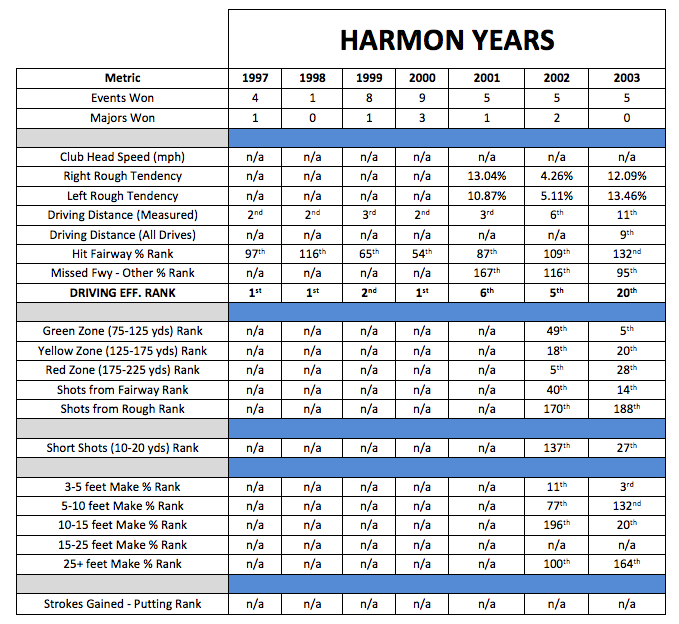
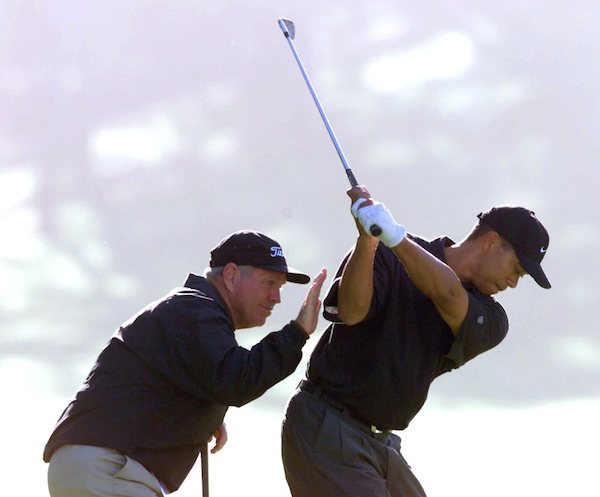
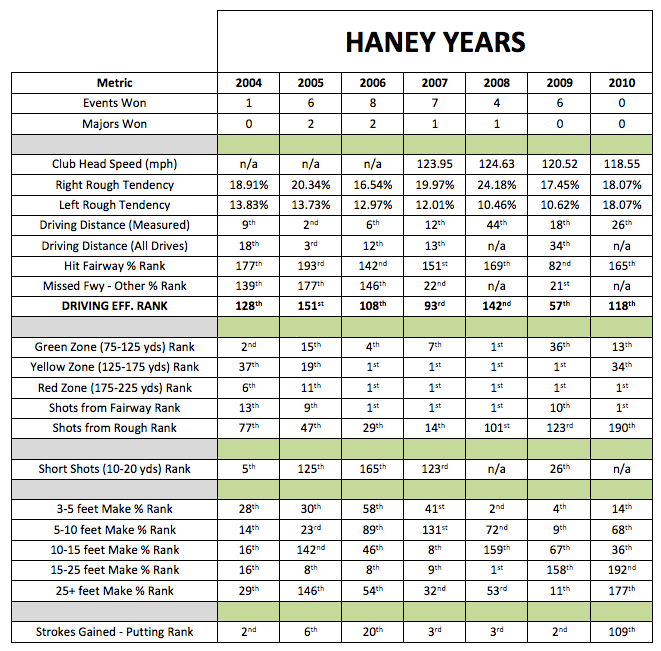

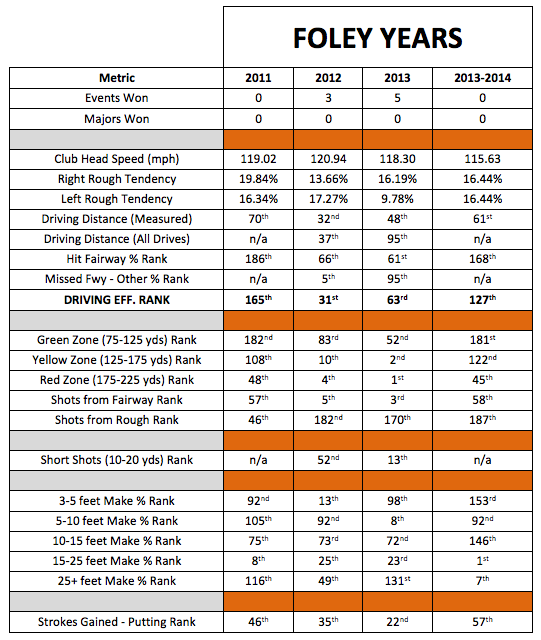
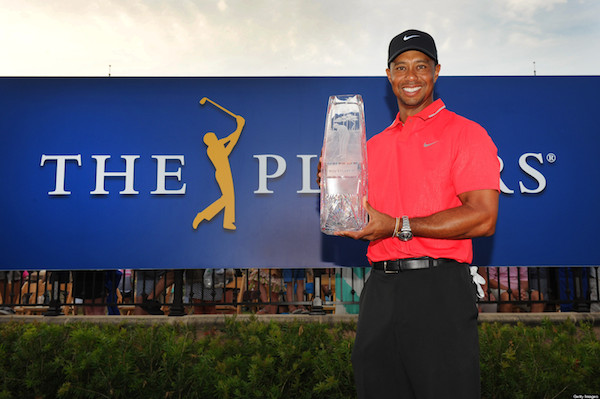













Pingback: Interesting article « Thomas Petersson
Kisha
Sep 9, 2014 at 9:58 am
PF
marionmg
Sep 7, 2014 at 9:50 pm
Strokes gained….strokes gained…..strokes gained….
sebastien
Sep 7, 2014 at 8:36 am
So… All of them got ‘fired’ following a bad season…
I could care less who he picks, just hope he gets to enjoy the game again cause all I’ve seen lately is a miserable Tiger
Christosterone
Sep 5, 2014 at 11:17 am
Tiger has won 79 PGA tournaments(106 total)and 14 majors.
For the record, in 2013 tigers stats:
5 WINS…thats 5 in one year including the players
PGA Player of the Year
PGA Tour Player of the Year
Vardon Trophy
Money List Winner
………..
I would say that is pretty impressive and bodes well for his future…
He is currently recovering a major back surgery so it is expected that he will not be up to form for a minimum of 6 months from his surgery…probably more like a year
Jerome M
Sep 5, 2014 at 8:14 am
Lovely article Rich. And yes, there are people who care (unlike the comment made by ‘Booger’).
In my view, Tiger has lost his ‘energy power’ as a result of the reduction in his range of motion due to his heavy dependency on weight training. This loss of energy has reduced his club head speed. And to make up for the loss of his club head speed and hence distance, he lifts heavy weights. More scar tissue is formed and the cycle continues.
His accuracy, or lack thereof, off the Tee and with his Irons under Sean is a direct consequence of his improper ‘firing’ sequence and his his improper spine alignment at impact (both down-the-line and frontal).
The issues above are easy to resolve at any age. He just needs to stop heavy weight training and to remove all scar tissue by visiting a professional who specializes in microfiber reduction. He can do it! He is Tiger Woods.
Booger
Sep 5, 2014 at 6:29 am
In the middle of the playoffs and the Ryder cup coming up, your writing about this guy. Nobody cares.
DavidOber
Sep 7, 2014 at 10:04 pm
I care about Tifwe. Just like I still care about Nicklaus, Palmer, Player, Trevino, Watson and all the other living greats. Nice article, sir. Thank you.
DavidOber
Sep 7, 2014 at 10:05 pm
“Tifwe” was supposed to read, “Tiger.”
Raurie
Sep 5, 2014 at 2:02 am
Really great read. I know we don’t have all the metrics from the Harmon era but it interesting to see that Tiger was not necessarily the complete package that we all seem to think he was during that time (myself included). I would love to be able to see his stats for the red, yellow and green zones during the Harmon era.
Jeff
Sep 4, 2014 at 10:26 pm
This is probably going to strike some as an inappropriate comment, but there’s a real basis for my hypothesis. I think Tiger’s club head speed and accuracy both fell of when he lost the ability to perform the favored “core strengthening regimen” of athletes and men since the beginning of time. The scandal of ’10 cost him in many ways, the least reported of which is he couldn’t possibly have had the same Wilt-Chamberlain like prolific pace with the ladies. It may make some blush, but there’s not much better for core strength, and core strength is great for golf.
James
Sep 4, 2014 at 2:18 pm
Thanks for that, Rich. In Haney’s book he said that Woods had trouble adapting to the new less spinny balls when they came out and shots which previously had drawn back to the middle of the fairway with his driver stopped doing it with new balls. He had to exaggerate the path/face relationship to get it to come back and became less accurate.
JBH
Sep 4, 2014 at 1:13 pm
One particular thing I’ve noticed since Tiger started with Foley is that he doesn’t seem to have the artistry/arsenal of shots he used to have. I realize a new swing will take time to develop these shots but I remember when Tiger would spray the ball all over the park off the tee and then hit some ridiculous recovery shot that made your jaw hit the ground. He seems to be very limited with his options now and unless he’s in the short grass he’s having to lay up and scramble for par.
TheFightingEdFioris
Sep 4, 2014 at 12:47 pm
I learned a little… But I certainly reaffirmed that Tiger Woods with an iron in his hand is the greatest of all time. He’s got Hogan’s low ones, he’s got Nicklaus’s high ones, and everything in between. Loved watching him hit all nine shots under Haney, what a joy. Hope he goes back to being an artist, like that.
West
Sep 4, 2014 at 12:26 pm
Is it also possible that athletes generally taper-off over the years too???
TheFightingEdFioris
Sep 4, 2014 at 12:50 pm
Most of the other great players of Tiger’s generation have played their best golf at this age.. Ernie was great in 2010 and won the Open in ’12. Furyk continues to be on the leaderboard every week. Vijay was unreal at 40. Phil won an Open and contended in countless other majors.
But I will admit… this horse (or cat, if you will) has a ton of miles on it.
Jake
Sep 4, 2014 at 3:15 pm
Driving/Iron play declines quickly for guys from the late 30s, especially into the 40s. Check the 3rd/5th graphs here (http://golfanalytics.wordpress.com/2014/05/14/aging-curves-for-scrambling-and-driving-distance/).
And I strongly disagree that most of his contemporaries have had their best years in their 40s. Phil isn’t the overall player he was in the mid 2000s (when he was ~35). He’s won a major after 40, but his overall game has declined from top five to more like top 20. Same with Ernie. He was top five in the world in his 30s; he’s declined to a shell of that guy since. Lee Westwood’s not anything like the guy he was in his late 30s. Retief Goosen was great in his late 30s, now he’s anonymous. Padraig Harrington hasn’t been the same since he turned 40. Robert Allenby, a hugely underrated ball-striker, has been awful since turning 40. Greg Norman was completely cooked by age 42-43. etc, etc, etc.
The list of contemporaries who genuinely have played their best golf after 40 is Stricker and Vijay. Furyk has managed to stay about the same.
Chris
Sep 4, 2014 at 12:02 pm
I love these statistical looks at things. Keep up the stellar work!